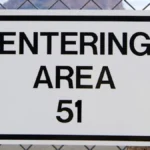
Located in the Quang Ninh province of Vietnam is Halong Bay. This bay is famous for its more than 1960 limestone, rocky, tall islands which are rich in tropical vegetation. Halong Bay is approximately 579 square miles in size and is home to approximately 1600 fishermen who live in floating villages. The rich bio-diversity of the bay, and its beauty and its history has captured the interest of many throughout the ages. It is classified as both a World Heritage Site by UNESCO, and as one of the New 7 Wonders of Nature.
Halong Bay is a famous UNESCO World Heritage site featuring thousands of beautiful limestone karsts, and around 2000 islands and islets.
Halong Bay means ‘descending dragon bay’. Legend states that gods sent dragons, who dropped jewels and jade from their mouths into the bay, creating the islands.
It draws around 2.58 million tourists per year.
Research has shown that there were prehistoric humans in the area tens of thousands of years ago.
The bay is relatively shallow with its deepest depth measuring at 33 feet (10 metres).
The bay extends 120km along the coastline and is 1,553 square kilometers in size.
Approximately 1600 people live in four floating fishing villages: Cua Van, Ba Hang, Cong Tau and Vung Vieng – this means that the majority of the 2000 islands that make up Halong Bay are uninhabited.
Many of the more than 1960 islands have secluded beaches, grottos and caves.
There are 450 species of Mollusc and over 200 unique types of fish!
Some of the wildlife found on the islands include: monkeys, birds, lizards, and even antelopes.
Aside from the natural scenery that commands Halong Bay, other great attractions include the floating fishing villages where the local fishing people can be found going about their daily business.
There are 450 different mollusks and 200 different species of fish in Halong Bay.
Since 2006, Halong Carnival has been the spotlight of Halong Tourism Week and the biggest festivity in the bay.
Some of the islands have permanent residents and tourism businesses.
Halong Tourism Week is usually in April or May and includes a Miss Halong Contest.
Most of the islands in Halong Bay are limestone. This limestone has been forming for over 500 million years.
Archaeologists believe that humans have lived in Halong Bay for around 18,000 years.
Less than half of the islands have been named. Many of the names come from the shape of the islands themselves, such as Mai Nha Island (roof) and Voi Island (elephant).
Over the centuries, Halong Bay has been the scene for many naval conflicts between Vietnam and foreign aggressors.
Many of the islands are untouched due to their steep edges and heights which make it too dangerous to explore.
In 2000 Halong Bay was designated an UNESCO World Heritage Site and in 2007 it achieved recognition as one of the New7Wonders of Nature.
Some of the islets (small islands) rise from the water to heights of up to 330 feet.
The Ha Long Bay management board has launched several routes to explore 28 locations on the bay.
The height to width ratio of many of these islets is 6:1. They reach much higher than they are wide.
Statistics showed that Ha Long Bay has 533 cruise ships.
The most famous grottos in Halong Bay are Heavenly Residence Grotto (Thien Cung), Surprise Grotto (Sung Spot), Driftwood Grotto (Dau Go) and Three Palace Grotto (Tam Cung). The grottos in Halong Bay are some of the most spectacular in the world. Many are open to visitors but a number of others are not in an attempt to preserve their integrity.
Foreign tourists are particularly interested in seeing how local farmers raise oysters for pearls to create pearl jewelry.
There are both an oceanic and seashore bio-system and a tropical evergreen bio-system in this region.
The city sent inspection teams to ensure security, order and safety, while removing illegal seafood business houseboats to the designated area at Cua Van.
There are 60 widespread faunal and 14 widespread floral species in this region.
The bay features thousands of limestone karsts and islets in various shapes and sizes.
Nguyen Tai, a scholar and poet wrote about Halong Bay 500 years ago, calling it ‘rock wonder in the sky’.
The limestone in the bay has gone through 500 million years of formation in different conditions and environments.
The Ministry of Culture, Sports and Tourism of Vietnam listed Halong Bay in the National Relics and Landscapes publication in 1962.
There are floating restaurants and markets all-around the main Halong Bay islands!
UNESCO classified the core of Halong Bay as a World Heritage Site in 1994.
The Hospital Cave in Ha Long Bay was used as a Secret Hospital during the Vietnam War.
Ho Chi Minh, who was both the prime minister and the president of Vietnam at different times, called Halong Bay ‘the wonder that one cannot impart to others’.
Ha Long Bay’s Famed Wooden Boats take visitors back to Vietnam’s royal ships.
The mines placed in the channels between the islands by the U.S. Navy during the Vietnam War there is still a threat to shipping today.
Most of the islands are named based on their appearance and shape. For example, Voi Island is so named because it resembles an elephant.
Many of the species of endangered fish in Halong Bay are being threatened by the game fishing that occurs near the coral reefs.
Filming for the 1997 James Bond film “Tomorrow Never Dies” took place in the Halong Bay area.
Halong Bay was classified as one of the New 7 Wonders of Nature in 2012.









